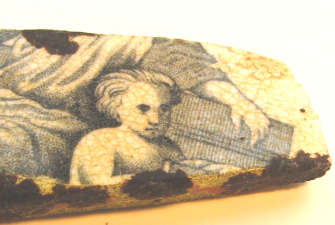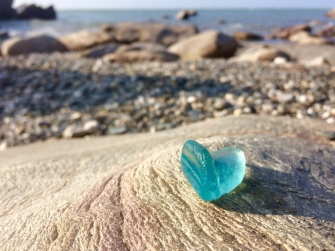

Beach Glass
Bottles and other items get broken and, out at sea, the action of the water knocking the pieces of glass against sand and gravel, gradually grounds off the smooth top surface. This leaves the glass looking milky and smooths off any sharp edges. This produces what is known as beach glass or sea glass.
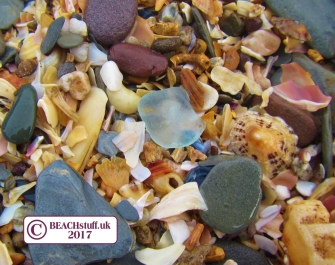
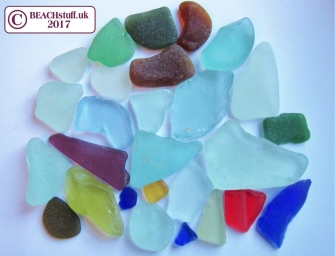
The most common sea glass colours we find are clear (which turns milky white through the abrasive action of the sand), green and brown simply because those are the most commonly used colours of glass in bottles. It is thus always good to find glass which is a different colour, simply because of its relative rarity.


This is old glass - the base of an old wine or oil bottle probably. Black glass (which shows are green/yellow in a bright light (see below) was thecolour of the first glass made. The thickness of the glass and the off-centre nature of it, also suggests that it is early glass.

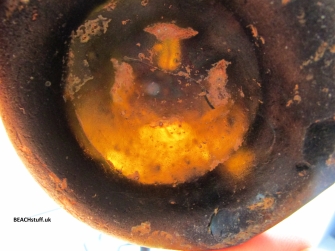
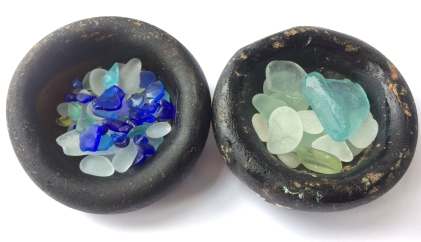
Bottle bases used as bowls
There is a beach in Russia which is famous for its sea glass. It is thought that a nearby glass factory threw its waste glass into a river, which transported it to the sea where it was worn down into smoother pebbles and dumped on the beach. The whole beach is now a multicoloured treasure trove of glass.
Mermaid's nipple
A thick nobble of glass is generally a bi-product of the way glass used to be blown leaving an extra thick blob at the base of a bottle.

Sandwich paste pots
Remarkably, sometimes intact glass items can be found. Perhaps these come out of dunes more often than they are washed up but they are a satisfying find.
These little sandwich paste jars are one of the more common glass objects, perhaps their size and relatively thick glass means they are more likely to survive. Shippams, the brand on the striped jar famously made sandwich meat paste for many years.

The company itself started in Chichester in 1786 and the brand continues today having been bought by Prince's in 2001.
Before you rush off to the Antiques Roadshow to get your paste jars valued, those with the name Shippams on were first produced in the 1930s but remained in production until the 1970s.
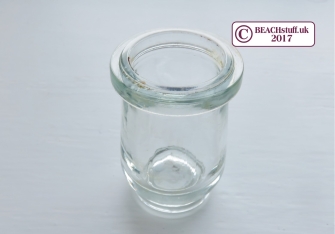
Light bulbs
It never ceases to amaze me how many intact light bulbs end up on the beach. They must be washed in but how do they survive the rigours of life on the waves? And it's not just standard household style bulbs but also strip lighting can be found.
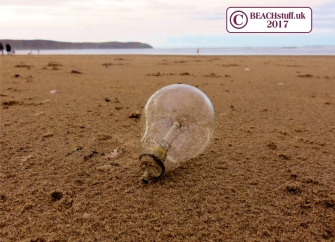
Codd bottle marbles
Codd bottles were patented in the UK in the 1870s as a way of keeping carbonated drinks fizzy. The thick glass bottles had a glass bottle which was forced under pressure against a rubber washer. The bottles occasionally turn up on beaches but more commonly the large, clear, non-shiny marbles show up.
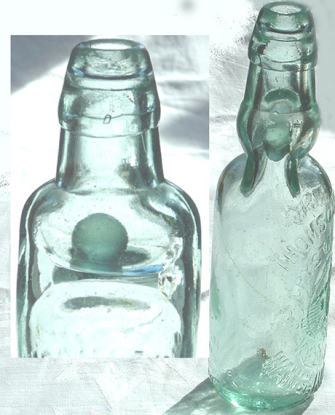
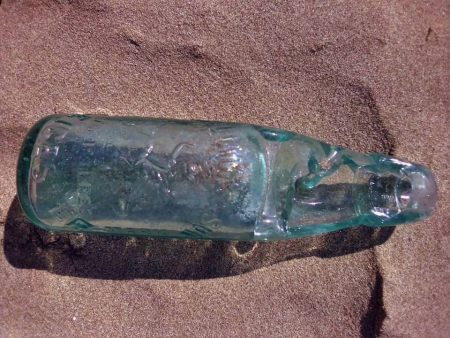
A codd-bottle I found buried in the dunes. Sadly the neck had been broken and the marble was missing.
Glass stopper
Just occasionally an intact glass stopper can be found. Before screw tops were developed, glass stoppers were used to seal bottles.

Some clues...
Sometimes, a piece of glass can show up with embossed lettering. Pre-labels, this was a common way of what was in a bottle and remains in use by some brands to this day - Gordon's Gin being a common example.
This piece of thick glass had three clear letters 'GOW'.

These three letters were all that was needed, as the fonts match completely, to identify the bottle as from Paterson's of Glasgow Camp Coffee. It probably dates from around the 1940s. Still think glass is fragile?!
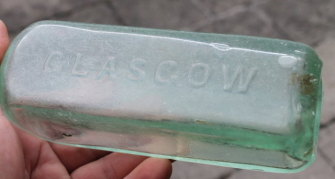
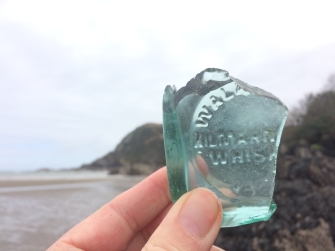
This square bottle base had 'Walkers Kilmarnock Whiskey 186?' embossed on it. A quick Google search said this was a brand name used between 1870 and 1908. Wuld have been nicely matured by now - shame the (bit of) bottle was empty!
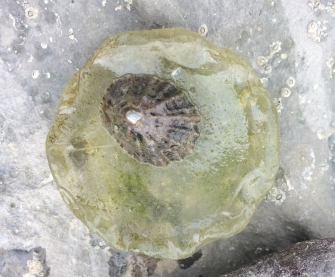

Know what a hendecagon is? Apparently it is this - an eleven-sided shape or bottle in this case. This bottle base was home to limpets of taste.
